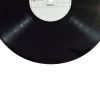Prerequisite:
For this guide, we will assume you already have the following:
- Web hosting (cPanel)
- A registered domain name, that is already configured to point to your hosting.
In This Guide We Will
- Source the required WordPress files and upload them to your web hosting.
- Create a MySQL database for your WordPress website to connect to.
- Run your WordPress installation and complete the setup of your new site.
Grab A Copy Of WordPress
Head to https://wordpress.org/download to download your free copy of WordPress, we will need this zip file to install WordPress on your web hosting.

Login To cPanel
By default you can access your hosting via cpanel.yourdomain.com. (swap ‘yourdomain.com,’ for your domain name.) or you can login using your hosting companies customer panel.

Open The File Manager
From the main screen inside your cPanel hosting account, open the File Manager. It is located under the ‘Files’ section of the home screen.

Navigate To Public_HTML
This folder is the root folder of your hosting that is publicly accessible to the internet. Anything you place inside this folder, or inside of folders withing will be able to accessed by anyone, anywhere without authentication by default.
Double click to open this folder.

Open The Upload Tool From File Manager
From the top of the screen you will see a menu bar, open the link that reads ‘Upload.’ This will open the upload screen from a new tab on your computer.

Lets Upload Our WordPress Zip File
Select the zip file you downloaded earlier from wordpress.org and press upload, to upload the zip file to your web hosting account.

Wait For The Upload To Finish
This may take some time depending on the speed of your internet connection. You will notice a message underneath the progress bar to tell you when the upload is complete.
You can close this tab once the upload is complete.

Reload File Manager
Once you have uploaded your zip file to cPanel, press ‘reload,’ from the menu bar to refresh the list of files inside Public_HTML
You should now see WordPress.zip.

Lets Unzip The Folder
Right click on the zip file and choose the option that says ‘Extract,’ from the menu.

Choose Path And Extract Files
By default, cPanel will extract the files into the same directory the zip file was placed. In this instance this works great for us. When this is done, the zip file will be extracted into the root folder of public_html.
Run the extraction.

Reload And Delete The Zipped File As We Don’t Need It Anymore
Take a moment to refresh the File Manager and delete the zip file we uploaded earlier. It’s the same process as extraction. Right click on the file and choose ‘delete,’ from the menu and follow the prompts.
Refresh again.

Lets Move The Files Inside The WordPress Folder, Right To The Top
You may have noticed all of our files now are now inside a folder called ‘WordPress.’ this would mean that when you access your WordPress website by default your web address would be yourdomain.com/wordpress
We don’t want that, so we are going to move all the files from inside the WordPress folder and move them up a directory so they are sitting in the root folder of public_html.
This means when you type in yourdomain.com it will load your WordPress site without the ‘/Wordpress/,’ on the end.
Double click the WordPress folder to enter the folder.

Select All Files To Move & Choose Destination Path
From inside the ‘WordPress,’ folder select the top folder ‘wp-admin,’ by clicking once, and whilst holding holding down the shift key click the last item in the directory ‘xmlrpc.php.’
All files should now be highlighted in blue. Alternatively you can press ‘Select All’ from the menu bar to the right of the reload button.
Right click on the selected files and select ‘Move,’ from the dropdown menu.

Now Lets Set The Destination Path
With all the files selected from inside the move dialogue, we are going to remove ‘WordPress’ from the destination path. This will move all files from inside the WordPress folder, up and out into the root folder of your web hosting public_html.
See the screenshot below, and follow in order one to three.

Return To The Root Directory And Remove The Empty Folder
Once you have moved the files, the folder called ‘WordPress’ will now be empty. Click on ‘Up One Level’ to navigate back out of the folder and back into the root folder public_html.
Take a moment to reload the files again for good measure.
You can now delete the empty WordPress folder, by selecting, right clicking and pressing delete. Follow the prompts.

Section Two: Lets Create Our MySQL Database
Now that we have uploaded the WordPress files and placed them in the correct location, the second part is setting up our database that our WordPress site will use to store it’s information.
From the main screen on your cPanel hosting, locate the Database section and open the ‘MySQL Database Wizard.’
This will open in a new tab.

If you don’t see the wizard, in short here is what you will need to do.
- Create a MySQL database.
- Create a user.
- Link the user to the database and give them all privileges.
Create Your Database By Entering A Name
Lets create our database name, here I have chosen to name the database ‘demosite_d,’ choose a name that represents your site and one that can be quickly identified if you have multiple sites connected to your hosting in the future.
I have also attached ‘_d,’ at the end, so that I can quickly identify that this is a database and not a user.
Enter your desired database name and press ‘Next Steps.’

Create A User
Next we will create a database username, and password pair for the database we just created.
You might find it helpful to have a notepad open next to you as your work, so that you can copy and paste these details in.
Choose a strong password, you won’t need it again after the installation, so make it random, make it strong.
Once you are finished press ‘Create User.’


Lets Assign Our User Some Privileges
We have so far created our database, and a user. It’s now time for us to establish what level of access our user has to the database we created.
For the simplicity of this tutorial and to be beginner friendly, we will grant ‘all privileges.’
In the future I suggest it is wise to review this article on WordPress hardening. In this article it describes the benefits and cons of granting only the required privileges.
It will make WordPress more secure, but will also increase the chances of compatibility issues with plugins, and increase the learning curve early on.
Press ‘Next Steps’ to finish the setup of the database.


Section Three: Run The WordPress Install
We are very close to finishing the installation now. If you have got this far we have:
- Downloaded WordPress
- Uploaded our files to cPanel.
- Moved them into the right spot.
- Created a MySQL database.
- Created a user.
- Given our user permission to access the database.
Now visit your domain, yourdomain.com if the install has gone to plan you should see the first setup screen with a large WordPress logo at the top.
Choose your language and press ‘Continue.’


Press ‘Lets Go.’


Lets Tell WordPress About Our Database
Press ‘Submit.’


Run Install
Press ‘Run the installation.’


Last Setup Screen
This is it, this is the last screen.
Give your site a title and create an admin user. Avoid using ‘admin’ as your admin username as this is easy to guess and a target for automated programs which will try to brute force into your site.
Don’t panic about your site title, you can change this in settings later.
Set a strong password for the admin account.
Be sure to enter an email address you can receive mail on, this will be used to send you updates about your site, and to reset your password should you lock yourself out.
Press ‘Install WordPress.’


Well Done, You Did It!


Celebrate, You Deserve This!
Now Lets Login
You can access the admin area of your new site by visiting yourdomain.com/wp-admin


Welcome To Your Admin Dashboard!
We made it, congratulations on your new WordPress website.


Well that’s us done for today, enjoy!
Some Next Steps When You Are Ready
Welcome to your brand new site, and congratulations. I suggest you now spend some time exploring the different areas of the dashboard,
Here are some things, I would do now, to help you later.
- Visit Settings, then General and set your time zone. This is important because this is the setting that will determine when scheduled posts go live on your website. If it’s not set correctly then things might appear late or early.
- Download the WordPress app for iOS and Android so you can publish and check comments from the palm of your hand.
- Change links structure, visit settings then Permalinks, and choose ‘Day and Name,’ this will change how the URLS look for blog posts. the default is a little plain for me.
- Setup your tagline.
- Find a theme: The WordPress has a great repository of free themes you can use to showcase your work. Or you could visit a paid Marketplace to purchase a theme for your website.
- Don’t forget to delete the first comment, post, and page WordPress setups as examples once you get a hang of things.




